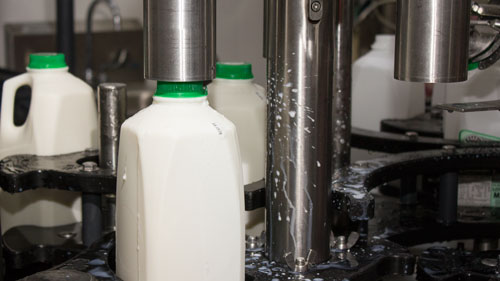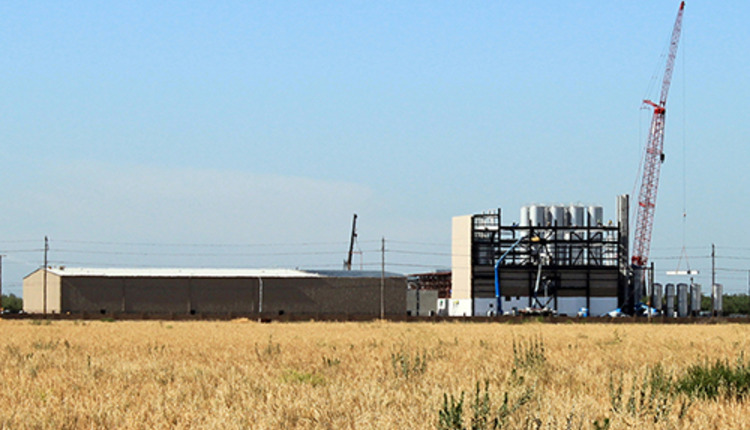
Yes, there is a "price penalty" for dairying in California, as noted in the June 23 Hoard's Dairyman Intel "A price penalty for dairying in California." The current California system is the penalty.
The California system - tightly regulated and very changeable (now we call it unstable) - was designed to do just what it is doing. It was designed to eliminate competition through a system of tightly regulated, lower minimum classified prices, where all Grade A milk must be pooled. The opposite occurs in a federal order with higher minimum prices and the option to not pool. This California system worked when dairy producers could live with low prices. But low prices will no longer cut it as California dairymen compete for scarce resources like land and water.
In your article, you imply that the "price penalty" is the difference between the 4b and Class 3 regulated price. That's not a good depiction. The penalty (lower pay prices) comes from the entire California regulated pricing system, part of which is the regulated minimum price.
Think about this. In the most recent issue of Dairy Industry Newsletter from London, Barry Wilson published global dairy pay prices. He does this regularly now. It's quite interesting. Over the last 12 months, dairy producers in the European Union (EU), on average, were paid 39.73 cents per kilogram. Fonterra in New Zealand (NZ) paid 40.02, and the average for the U.S. was 35.31. These prices are standardized for components and currency. They should be fairly comparable. Effectively, U.S. dairy producers are paid 88 to 89 percent of dairymen in the EU and NZ. And California is very likely on the low or bottom end of the average of the U.S. EU and Fonterra milk prices are unregulated with no regulated classified pricing or pooling.
The price penalty is caused by the California system that is almost devoid of any real competition for milk. It was the same in 1985 when our company, Hilmar Cheese Company, Inc., was formed. In Wisconsin, there are 100 licensed buyers of milk. Sounds like competition. That's what drives higher prices.
Will the highly regulated California system (or some variation of it) with a higher regulated minimum price produce higher milk pay prices - closer to the EU and Fonterra? What have been the results to date of a highly regulated, unstable system, even when over 80 percent of the milk is controlled by producer-owned processors? Has it facilitated higher value dairy products going into higher value markets that are able to pay higher prices? No! Why do we think it can?
The California system of pooling and regulated pricing was designed to reduce the competition for milk in the 1960s. There was a lot of abuse by processors towards dairy producers, so the system was designed to make producers indifferent about who bought their milk and all revenue was shared (pooled). The pool created a "disconnect" between producers and processors because of the prior abuse. Today, producers still talk about the abuse and the need for the "pool protections" even though over 80 percent of the producers own the entities that pick up and market their milk. This ongoing fear of abuse that continues to be promoted is the primary driver to keep the current tightly regulated system. With over 80 percent of the milk marketed by producer-owned entities, does the need for such a tightly regulated system that diminishes competition and prices still exist? Or does this current system really create the price penalty that is paid by California dairy producers?
The current system, designed in the late 1960s, was designed for another era. It really was designed to eliminate competition and lower prices. By tightly regulating the price of all Grade A milk, allowing the system to be changed very quickly via the hearing process, pooling revenues to disconnect dairymen from markets, and having make allowances that place a disproportionate amount of risk on dairymen, we now have a system that sadly lacks new investment and is devoid of competition. The end result from this old system is that it is producing exactly what it was intended to produce - no competition and low prices.
The current California milk regulatory system is very broken. No Band-Aid will fix it. Your article implies that the level of regulated price is the simple answer. The price penalty needs to be dealt with by changing the system, not through more regulation. We need good, complete answers - not ones that oversimplify. We badly need more competition for our valuable milk. That is what will raise the value of our milk. And that will only come through more processor/cooperative investment that takes advantage of the real potential for California dairy throughout the U.S. and the world.
In short, the current California system is the penalty. The California system (tightly regulated and very unstable) needs to change to a less-regulated system without end product pricing formulas that protect processors. These types of systems already exist and are what increases competition for milk and drives producer prices in the EU and NZ to higher levels.






